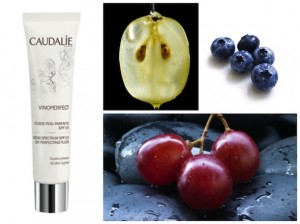What Are Free Radicals, and Why Are They Really Bad?
Free radicals are to our era what "non-comedogenic" was to the 1990s: a buzzword everyone happily bandies about, but no one really understands. We know free radicals are bad, but why? We got the lowdown on why they seem to be on every beauty company's most-wanted list.
So, really—what are free radicals? The Chemistry 101 answer is that free radicals are atoms or molecules with an unpaired electron. This makes them unstable. So, like that children's game of musical chairs, they're on the hunt for an extra electron to steal in order to become stable.
"The majority of free radicals in our bodies are called reactive oxygen species, or ROS,” explains cosmetic chemist Ni’Kita Wilson, the CEO and director of innovation at Catalyst Cosmetic Development and founder of Skinects. “These free radicals are the byproduct of cell metabolism and are necessary for our bodies’ biological processes." In other words, they're part of life.
But excess ROS cause a chain reaction of damage by creating additional free radicals—one snatches an electron from another molecule, which becomes unstable and snatches an electron from another molecule, and so on and so forth, Wilson says.
Where do free radicals come from? Although free radicals are a natural byproduct of life on the planet, Wilson’s got a bigger beef with sun exposure, which she says is the number-one damage-doer. "UV rays cause free radicals when molecules absorb the energy and are split apart," she says, meaning you're getting extra ones that what your body would normally produce. Metals in pollution can do the same thing, she says, as can smoke, stress, and an unhealthy diet.

Why should I care? Well, first and foremost, free radicals can attack DNA, which can potentially lead to cancer, so they're considered a health risk.

{{post.sponsorText}}
And on the beauty front, free radicals attack proteins like collagen and lipids (i.e., the skin’s structural layer and defensive barrier, respectively), explains Wilson. This can lead to wrinkles, dryness, and lackluster skin—way, way before your 80th birthday.
Mathilde Thomas, founder of the antioxidant-powered line Caudalie puts it this way: "Free radicals destroy the collagen and elastin fibers that keep your skin firm, and the hyaluronic acid that keeps your skin plumped. Deep creases appear. Skin gets thinner and dull." Free radical damage is the cause of a whopping 80 percent of all skin aging, she says. Not old age.
How do beauty products help? “Antioxidants ingredients can quench free radicals by binding with them to create stable molecules,” says Wilson. ("Quench" is a popular term among beauty science folk for talking about stopping free radicals and their damage.) She says that grapeseed extract is one of the best options out there for the job. It's the star ingredient in Caudalie’s vinotherapy products, including a new line that combines stabilized grapeseed polyphenols and vitamin C.
Can food and nutrition make a difference? Many foods contain antioxidants that the body can use to help quench free radicals, says Wilson. So eating things like dark berries, leafy greens, acai, and goji all make a difference. Yet another reason to make a smoothie. —Ann Abel
Loading More Posts...
